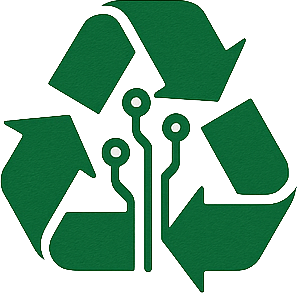In the United States, the safe disposal of pharmaceutical waste has emerged as a pressing environmental and public health concern. With millions of unused or expired medications discarded annually, improper handling poses risks of water contamination, wildlife harm, and even drug misuse. This article delves into the latest developments surrounding pharmaceutical waste disposal, including regulatory updates, innovative solutions, and the impact on communities and industries. As the nation grapples with this issue, stakeholders are pushing for sustainable practices to protect both people and the planet.
The Scale of Pharmaceutical Waste in the U.S.
The volume of pharmaceutical waste generated in the U.S. is staggering. According to the Environmental Protection Agency (EPA), Americans dispose of over 200 million pounds of unused medications each year. Hospitals, pharmacies, and households contribute to this growing problem, often flushing drugs down drains or tossing them into regular trash, which can lead to groundwater contamination.
This waste includes prescription drugs, over-the-counter medications, and veterinary products. The consequences are far-reaching, with studies detecting trace pharmaceuticals in drinking water supplies across multiple states. Addressing this issue requires urgent action from regulators, healthcare providers, and the public.
Regulatory Updates on Pharmaceutical Waste Disposal
Recent changes in federal and state policies aim to curb the risks associated with improper disposal. In 2023, the EPA introduced stricter guidelines under the Resource Conservation and Recovery Act (RCRA) for managing hazardous pharmaceutical waste in healthcare facilities. These rules mandate proper labeling, storage, and disposal methods to prevent environmental leakage.
Additionally, several states have implemented drug take-back programs. For instance, California’s Safe Drug Disposal Act requires pharmacies to provide collection kiosks for unused medications. According to Dr. Emily Harper, an environmental policy expert at Stanford University, “These initiatives are a step forward, but nationwide adoption and public awareness remain critical for success.”
Impact on Stakeholders and Communities
The burden of pharmaceutical waste disposal affects a wide range of stakeholders. Healthcare facilities face rising compliance costs as they adapt to new regulations, while pharmacies must balance customer convenience with safe disposal options. For communities, especially those near water bodies, the risk of contamination threatens public health.
Low-income areas often lack access to disposal programs, leading to higher rates of improper discarding. Environmental groups warn that aquatic ecosystems are also at risk, with fish and other wildlife showing adverse effects from exposure to discarded drugs. The ripple effects underscore the need for equitable solutions.
Innovative Solutions Emerging in the Field
Amid these challenges, innovative approaches are gaining traction. Some companies are developing mail-back programs, allowing individuals to send unused medications to certified disposal facilities. Others are exploring advanced technologies like incineration and chemical neutralization to safely destroy drugs.
Key developments include:
– Green Disposal Tech: Startups are creating eco-friendly methods to break down pharmaceuticals without harmful byproducts.
– Community Partnerships: Nonprofits are collaborating with local governments to set up free drop-off events.
– Educational Campaigns: The FDA launched a 2023 initiative to inform consumers about safe disposal practices.
These efforts show promise but require broader funding and support to scale effectively. As John Mitchell, CEO of EcoPharma Solutions, notes, “Technology alone isn’t enough; we need a cultural shift in how we view medication waste.”
Future Implications and Potential Developments
The issue of pharmaceutical waste disposal is likely to intensify as the U.S. population ages and prescription drug use rises. Without robust systems in place, environmental damage could worsen, alongside risks of drug diversion and abuse. Experts predict that federal funding for take-back programs may increase in the coming years to address these concerns.
On the flip side, some argue that overregulation could burden small pharmacies and rural healthcare providers. Balancing compliance with accessibility will be key. A collaborative approach involving government, industry, and citizens offers the best path forward.
Conclusion
Pharmaceutical waste disposal remains a critical challenge for the United States, with significant implications for public health and the environment. From stricter regulations to innovative technologies, recent efforts signal progress, but much work lies ahead. By fostering awareness and supporting sustainable practices, stakeholders can mitigate risks and build a safer future. As this issue evolves, staying informed and engaged will be essential for all Americans.
Frequently Asked Questions (FAQs)
1. What is pharmaceutical waste?
Pharmaceutical waste includes expired, unused, or unwanted medications from households, hospitals, or pharmacies that require proper disposal to prevent harm.
2. Why is improper disposal of medications dangerous?
Improper disposal can contaminate water supplies, harm wildlife, and increase risks of drug misuse or accidental poisoning if accessed by unauthorized individuals.
3. How can I safely dispose of medications in the U.S.?
Use designated drug take-back programs at pharmacies or police stations. If unavailable, follow FDA guidelines to mix drugs with unappealing substances like cat litter before sealing them in a bag for trash disposal.
4. Are there penalties for improper pharmaceutical waste disposal?
Yes, under federal laws like RCRA, businesses can face fines for non-compliance. Individuals may also face local penalties depending on state regulations.





